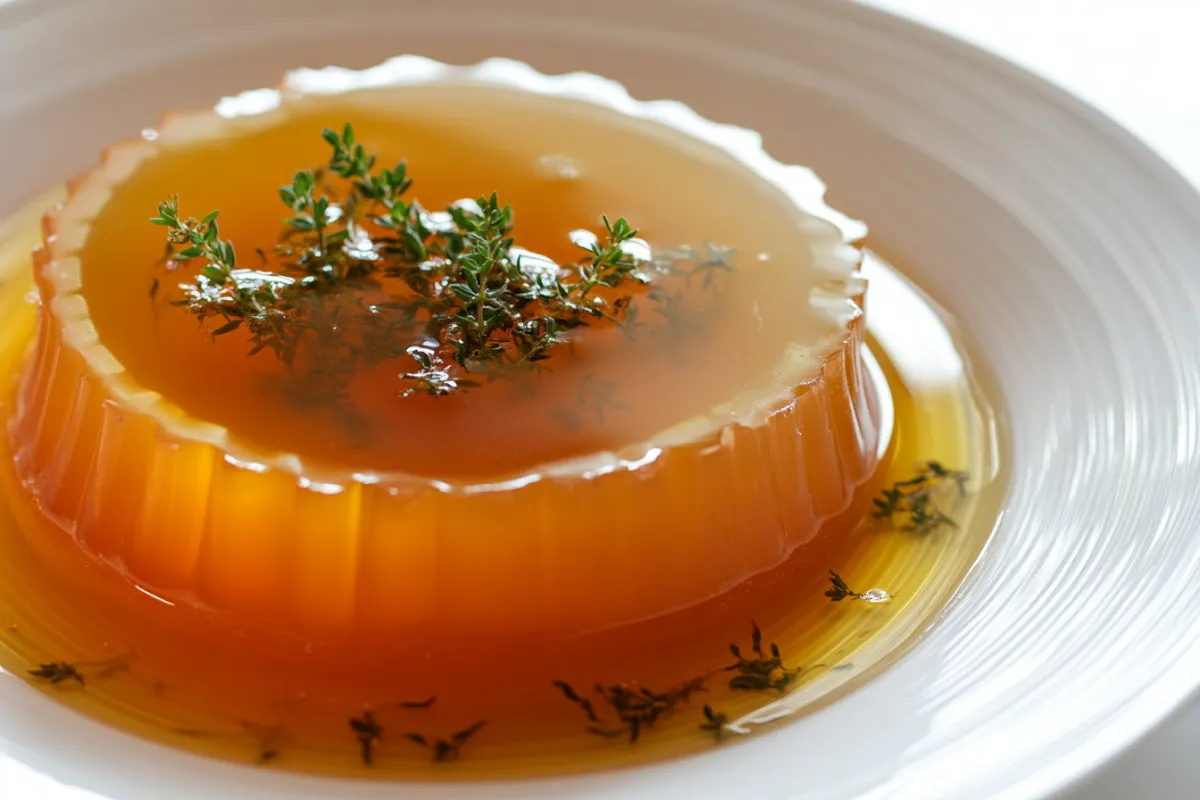What is Japanese Consommé?
Consommé is a culinary treasure appreciated worldwide. In Japan, it holds a special place. Japanese consommé, or Osumashi, is a clear, delicate broth that captures the essence of umami, the savory taste defining much of Japanese cuisine. Unlike its Western counterpart, which clarifies a rich broth using egg whites, Japanese consommé focuses on pure flavors. These flavors come from a few key ingredients like dashi, kombu (kelp), and bonito flakes. This article explores the history, preparation, and cultural significance of Japanese consommé. We will also provide a step-by-step guide to making this flavorful, nutrient-packed broth.
The History of Japanese Consommé
Japanese consommé has deep roots in Japan’s culinary evolution, although it is not as ancient as other traditional soups. In the 19th century, during the Meiji era, Japan opened its doors to Western influences. With this, French cooking methods, including those for consommé, made their way into Japanese kitchens. Japanese chefs, known for their innovative yet respectful approach to tradition, adapted these methods. They used local ingredients, resulting in a fusion that brought about Japanese consommé.
Traditionally, dashi has been the foundation for many Japanese dishes. When chefs combined it with Western consommé techniques, a new dish emerged. Japanese consommé offered the clarity of French consommé, but with the rich, umami flavors unique to Japanese cuisine. Today, this clear soup is a staple in Japanese homes and restaurants alike. It continues to evolve, with modern chefs adding tofu and mushrooms for extra flavor and texture.
For more examples of cultural blending in food, you might enjoy the ultimate guide to chocolate. This guide highlights the evolution of chocolate globally, much like Japanese consommé’s development.
Key Ingredients in Japanese Consommé
Japanese consommé might seem simple, but every ingredient plays an essential role in its delicate, umami-rich flavor. Below are the key components:
- Dashi: The backbone of Japanese consommé, dashi is made from kombu (dried kelp) and bonito flakes. It’s rich in glutamates, which are responsible for umami. This gives the consommé a deep yet subtle savory taste. Dashi is not only crucial in consommé but in many Japanese dishes.
- Kombu: A type of seaweed, kombu adds a briny, mineral-rich flavor to the broth. It enhances the umami taste and is responsible for the broth’s clarity. This makes it a vital component of Japanese consommé.
- Bonito Flakes: Made from dried, fermented, and smoked skipjack tuna, bonito flakes provide the smoky, umami kick that defines dashi. These flakes dissolve into the broth, imparting a rich flavor.
- Soy Sauce: While not always used, soy sauce can be added for seasoning and complexity. It contributes subtle umami depth to the broth.
- Mitsuba: A Japanese herb similar to parsley, mitsuba adds a fresh, slightly bitter flavor. It balances the broth’s richness and often serves as a garnish, enhancing both flavor and presentation.
- Tofu: Tofu is commonly added to vegetarian versions. It contributes a subtle texture and protein to the broth. Its mild flavor allows the umami of the broth to shine, adding body without overpowering the dish.
This combination of ingredients is vital to achieving the true Japanese consommé experience. Just like the careful selection of ingredients is crucial in Japanese consommé, it also plays a key role in making the best chocolate in the world.
How to Make Japanese Consommé: A Step-by-Step Guide
Making Japanese consommé from scratch might seem intimidating. However, with the right ingredients and a little patience, it’s achievable at home. Here’s how you can make this clear, umami-rich broth:
Ingredients:
- 1 piece of kombu (approximately 10 cm long)
- 1 cup of bonito flakes
- 4 cups of water
- Optional: soy sauce, tofu, mitsuba, shiitake mushrooms
Instructions:
- Prepare the kombu: Place the kombu in a pot with 4 cups of cold water. Let it soak for at least 30 minutes. This allows the umami-rich compounds to infuse into the water.
- Simmer the kombu: Slowly heat the water with the kombu. Keep the heat low. Just before the water boils, remove the kombu. Boiling can cause bitterness, so it’s important to remove it before this happens.
- Add the bonito flakes: After removing the kombu, bring the water to a boil. Add the bonito flakes and boil for about 30 seconds. Then, turn off the heat and allow the flakes to settle.
- Strain the broth: Use a fine-mesh sieve or cheesecloth to strain the broth. Remove the bonito flakes, leaving behind a clear, golden broth.
- Optional additions: Consider adding tofu, shiitake mushrooms, or a splash of soy sauce to enhance the flavor. These ingredients add complexity without overpowering the delicate umami profile.
- Serve and enjoy: Japanese consommé is best served hot. It can be enjoyed as a light appetizer or used as a base for dishes like Chawanmushi or Nabemono. Garnish with mitsuba for a fresh finish.
For another example of delicate preparation, see Caramel Ribbon Crunch Frappuccino. Like Japanese consommé, the creation process is key to the final product’s flavor.
Popular Dishes Featuring Japanese Consommé
While Japanese consommé is delicious on its own, it also serves as the base for many traditional dishes. Here are some popular examples:
- Osumashi: This clear soup is often served as part of a multi-course meal. It typically includes tofu, mushrooms, and a garnish of fresh herbs like mitsuba. The broth’s clarity and light flavor make it an ideal palate cleanser.
- Chawanmushi: A savory egg custard dish, Chawanmushi is steamed with a consommé base. This adds depth and umami to the custard. The dish is often garnished with seafood, chicken, or vegetables and served as an appetizer or side dish.
- Nabemono: This term refers to Japanese hot pot dishes. Nabemono often uses consommé as the base, with ingredients like thinly sliced beef, mushrooms, and vegetables cooked in the broth. As these ingredients cook, the consommé absorbs their flavors, becoming richer with each bite.
- Milk Consommé: A unique variation, milk consommé combines milk with the lightness of consommé. It’s often served with meatballs or root vegetables, making it a heartier dish. The milk adds creaminess while keeping the broth clear and flavorful.
These dishes show how versatile Japanese consommé can be. Whether served as a simple soup or used as a base for more complex dishes, it enhances the overall flavor of the meal.
The Nutritional Benefits of Japanese Consommé
Japanese consommé is not just a flavorful broth. It also offers several health benefits. Here’s why it’s a nutritious choice:
- Low in Calories: Japanese consommé is light, making it a great option for those watching their calorie intake. Despite its simplicity, it’s packed with flavor, making it a satisfying addition to any meal.
- High in Protein: Adding tofu or lean meat to the broth boosts its protein content. Protein is essential for muscle growth and repair, making this soup a healthy and filling choice.
- Rich in Umami: The umami in Japanese consommé doesn’t just enhance the taste. It can also make meals more satisfying. Studies suggest that umami can help regulate appetite, reducing the likelihood of overeating.
- Loaded with Micronutrients: The kombu and bonito flakes used in the broth are rich in important minerals. Kombu contains iodine, which is crucial for thyroid function, while bonito flakes provide trace amounts of magnesium and other vitamins. These nutrients support overall health.
FAQs About Japanese Consommé
- What is the difference between dashi and consommé? Dashi is a traditional Japanese stock made from kombu and bonito flakes. Consommé is a clarified broth. Japanese consommé often uses dashi as a base, but it is clarified to achieve a delicate flavor.
- Can I use store-bought dashi or consommé? Yes, store-bought versions can save time. Brands like Ajinomoto offer high-quality consommé bases. Ajinomoto Consommé is one popular option.
- Can Japanese consommé be vegetarian? Absolutely! You can omit the bonito flakes and use mushrooms like shiitake for umami. Vegetarian dashi made from kombu and dried mushrooms works well.
- What mistakes should I avoid when making Japanese consommé? A common mistake is boiling the kombu, which can make the broth bitter. Another mistake is not allowing the bonito flakes enough time to settle, leading to a cloudy broth.
- How long does it take to prepare Japanese consommé? If you’re making dashi from scratch, it takes about 30–45 minutes. If you use pre-made dashi, you can make consommé in about 20 minutes.
- Is Japanese consommé gluten-free? Yes, the basic ingredients are gluten-free. If you add soy sauce, be sure to use a gluten-free version.
Conclusion
Japanese consommé is a delicious, umami-rich broth that balances simplicity and complexity. It’s an essential part of Japanese cuisine, served on its own or as a base for more elaborate dishes. Its rich history, straightforward preparation, and health benefits make it a must-try for anyone interested in cooking Japanese food.
With just a few ingredients and a little care, you can create a broth that is flavorful, nutritious, and deeply satisfying. Much like the process of making Japanese consommé, the key to creating any traditional dish lies in choosing the best ingredients and paying attention to every step.

